Last week, the Indian government approved Ola Electric’s listing on the Indian bourses. The company will likely do an Initial Public Offering (IPO) in the coming months. Ola is the market leader in the Indian electric two-wheeler market, with a 35-40% market share, depending on the month you measure. That’s impressive, anyway you look at it.
We have followed the company closely since it acquired Amsterdam-based start-up Etergo in 2020. The Etergo AppScooter was one of the more exciting scooters developed during the first wave of European electric two-wheeler start-ups. At its unveiling, Etergo stunned everyone with a claim of a 240km range and a 42-litre underseat space. After some initial funding, the company took the crowdfunding route for an eventual EUR 80m valuation.
Then COVID-19 happened, and funding dried up. No one wanted a scooter when they were unsure about returning to the roads. Etergo was dead wood in the water and would have downed shutters before Ola swooped them up for an undisclosed amount.
That was 2020, and since then, Ola has, after considering changes, turned the AppScooter into what they call the S1.
The Ola IPO is perhaps the most important in electric two-wheelers globally. In its last round of funding, it was valued at USD 5.4bn, not exactly pocket change. Considering the nature of the game, where an IPO is an exit to private money through retail investors, Ola is expected to do the IPO at least above USD 5.5bn.
That valuation means that Ola’s market cap would likely be bigger than the total of all the publicly traded E2W manufacturers worldwide, excluding the Chinese.
For us on the outside, these may appear humongous numbers, considering that arguably the hottest electric two-wheeler brand in North America as of now, Livewire, has a market cap of less than USD 1.5bn.
To understand the mind-boggling valuation at which Ola is likely to IPO, we should understand the size of the Indian market. Last year, the country sold more than 20 million two-wheelers. While most have a sticker price of USD 1200, that’s still a lot of money.
In comparison, Europe is a two-million-unit market, and even if the average price is USD 5k, that’s still only half of the Indian market in terms of money.
Importantly, unlike Europe, India is not a fragmented market—the 20m pie is split between 4-5 major players, most homegrown. Hero, Bajaj, and TVS are behemoths and can buy any hallowed European brand for chump change.
We also don’t realise that the Indian two-wheeler manufacturers are now nearly as global as Honda. Bajaj Auto and TVS Motor have expanded outside the country and are big brands in the Africa and LatAm markets.
As a result, they have huge market caps. Bajaj Auto, touted as the most profitable two-wheeler manufacturer in the world, commands a valuation of INR 2.67tn (USD 31.94bn).
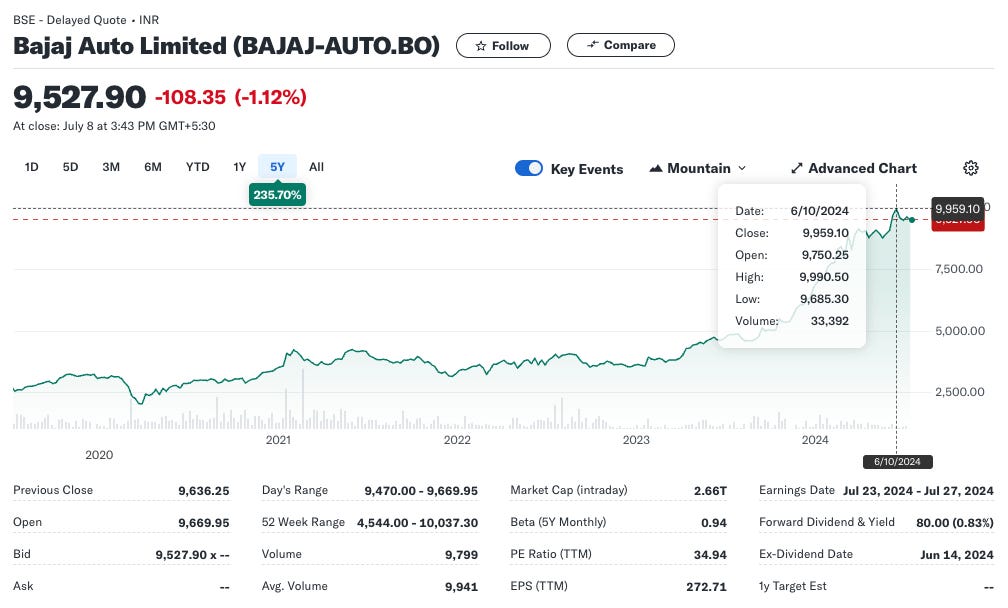
Hero MotoCorp and TVS Motor are also significant—Hero MotoCorp has a market cap of USD 13bn, while TVS Motor has a market cap of USD 13.7bn.
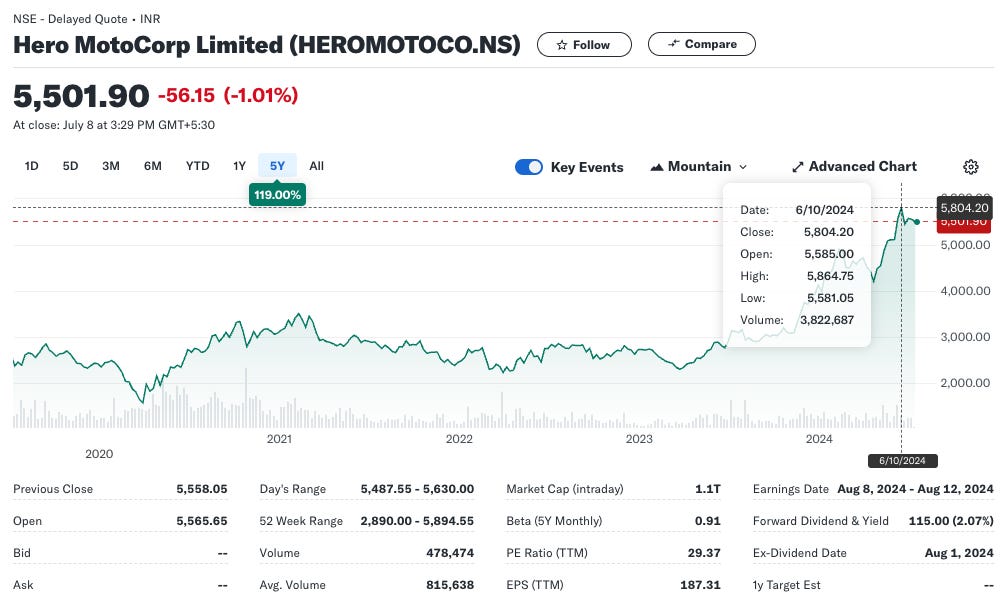
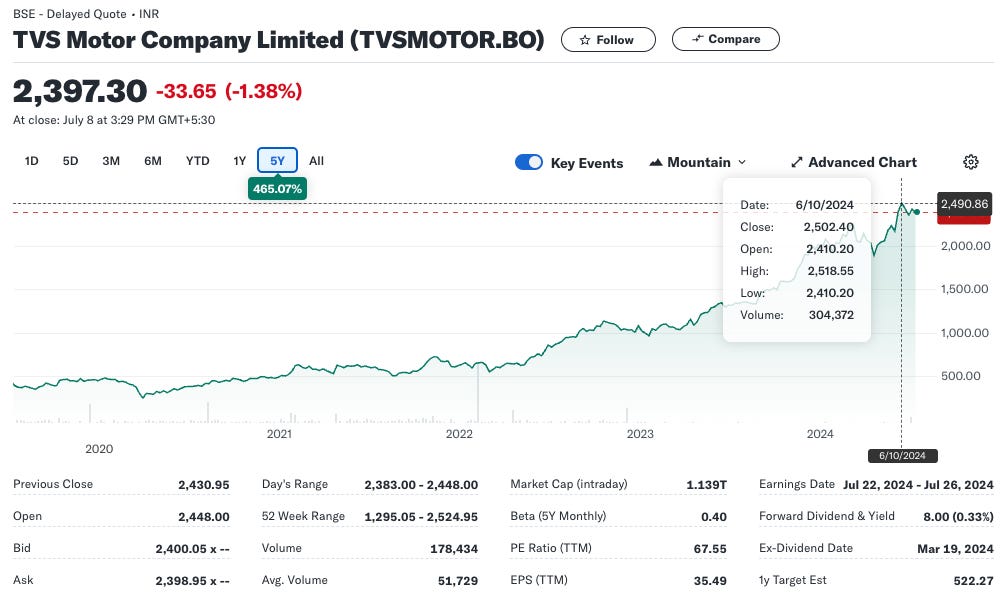
Most importantly, as all the above three charts indicate, the market cap of Indian two-wheeler players is at near all-time highs, having steadily appreciated over the last five years.
But this post is not about Ola or the mind-boggling size of the Indian two-wheeler market. Ola’s IPO is good news for them and a shot in the arm for electric two-wheeler manufacturers worldwide.
This is about the rest. This is about the train wreck that electric urban mobility stocks have been in the last two years. The excitement that was perceivable for urban electric mobility at the start of this decade has since evaporated and is now replaced by fear and disdain.
Nearly every E2W stock is at its lowest-ever market cap. Some are insolvent. Even when the world—including us—is drumming up enthusiasm for electric two-wheelers and new spots of green sprouting up, like in Africa, the few publicly traded E2W manufacturers are collapsing.
Important questions, and we will try to explore answers.
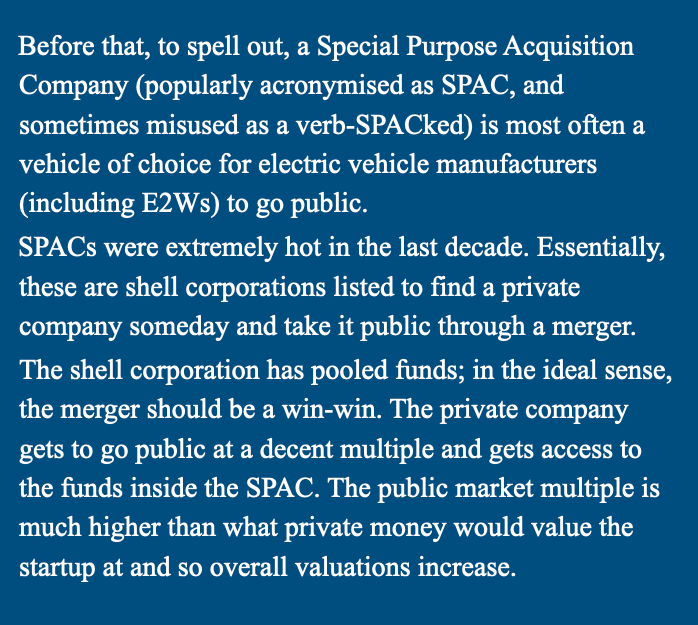
The SPAC is a popular vehicle for start-ups to tap the equity markets. The leading example is Livewire, which took the SPAC route in December 2021.
Livewire (NYSE: LVWR)
Livewire started as a concept motorcycle. Then, the concept became a production model. Then, the nameplate became a brand. Following that, the brand became a dedicated division. The parent company, Harley-Davidson, spun the division into a separate company. The new company is listed on the Nasdaq.
It is quite an upward and onward journey; the only missing piece seems to be sales. They don’t have many.
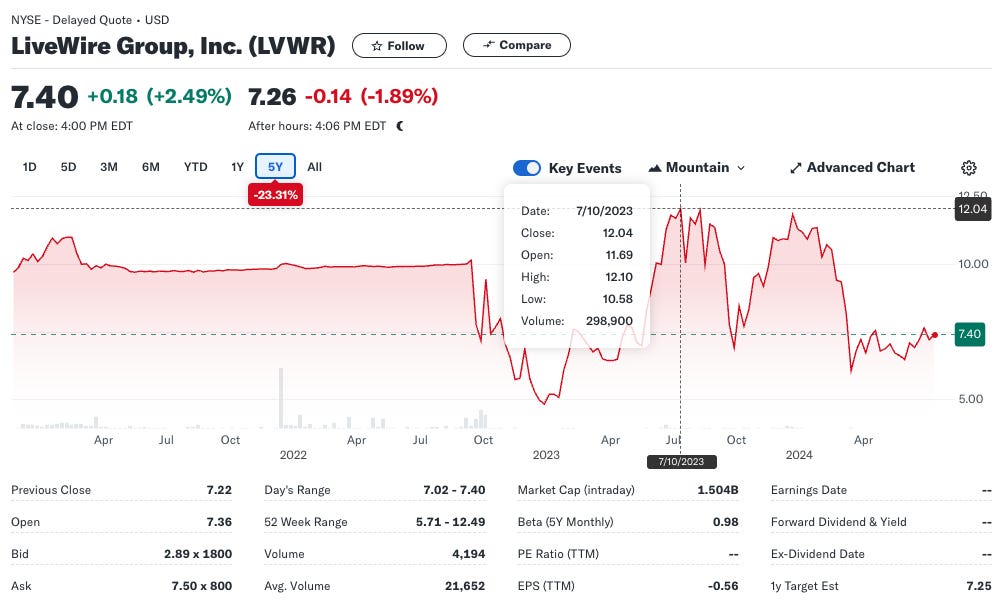
As we write this towards the end of June 2024, Livewire has a market cap of USD 1.5bn. At some point in July last year, the company had a market cap of USD 2.4bn. Since then, the market has lost some enthusiasm for Livewire even as the US bourses remain close to all-time highs.
We find even the USD 1.5bn quite generous – remarkable for a brand that shipped only 117 units last quarter, Q1 FY 2024. That is an outstanding achievement, considering only 63 motorcycles were delivered in Q1 FY 2023.
In doing so, Livewire made revenues of USD 1.2m and operating losses of USD 29.0m. If we dumbed it down to an incorrect layman’s level, Livewire lost nearly USD 250k on every motorcycle it sold.
The quarterly results suggest Livewire will likely lose north of USD 115m for the whole year, FY 2024. The company maintains guidance of an operating loss of USD 115m – 125m. Their operating loss in FY 2023 was USD 116m, and their net loss stood at USD 109.6m.
Livewire maintains that they will deliver around 1000-1500 units this year. That looks like a company burning a lot of money in the short term while selling too few motorcycles.
Maybe the problem is that even smaller Livewires (the original Livewire One at USD 23k is not very relevant) are pretty big. The S2 range (Del Mar and Mulholland) retail starts at USD 15.5k, and for that price, the customer gets a large Cruiser/Roadster motorcycle with a somewhat limited 112km range. For highway-happy America, this is too small. In the best-case charging scenario, the S2 rider is expected to stop for about 90 minutes before they can do another 90km. Rinse and repeat.
That’s too many constraints for rider experience and indicates the kind of challenge Livewire has set itself against.
For all purposes, the S2 range is too big and too expensive. Based on what Livewire calls the Arrow architecture, a new motorcycle platform uses the battery as a structural member. Now, we at InsigvhtEV get excited when we hear the words Battery-as-a-structure. Theoretically, the design simplifies a motorcycle frame, removing the usual tubular and stamped members and replacing them with the battery casing. Done correctly – as Damon claims – this can bring the weight down, an outstanding achievement for morbidly obese electric performance motorcycles.
The big constraint is that using the battery as a structural element fixes the size and shape of the battery casing. Precision castings, as needed for structural components in motorcycles, are expensive. While developing a family of motorcycles on the same platform, if the shape and size of the battery casing are fixed, they have to be referenced against the most expensive and biggest motorcycle in the family.
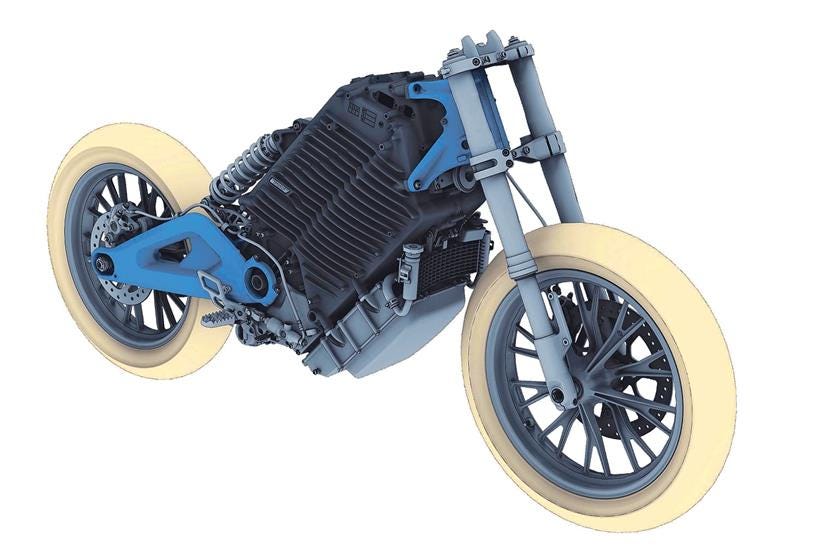
Anything smaller on the same base would carry a cost penalty. In real life, if Livewire made an S3 with a 7.0 kWh battery but using the same platform, the cost savings would only be that of the cells removed—about USD 250 at today’s rates. It is unlikely to be any savings from the battery casing castings.
Livewire has suggested that a scaled-down version of the platform—the S3 range — would make lighter machines and be used by Kymco.
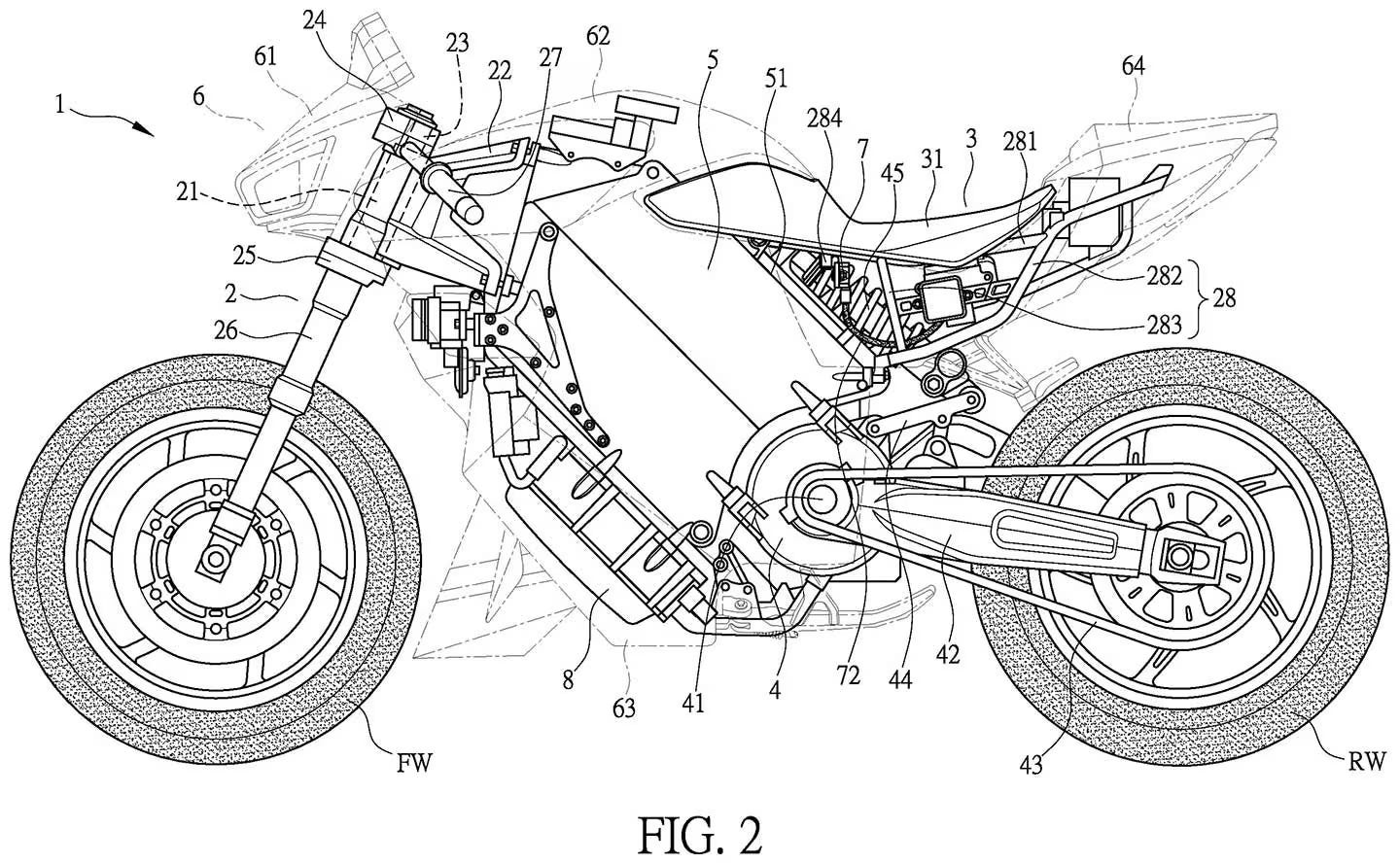
Livewire did mention that the Arrow platform would underpin at least three motorcycles. Two are already out without a decent jump in sales, so we should be worried.
Arcimoto (NASDAQ: FUVV)
Arcimoto used to manufacture the Fun Utility Vehicle (FUV) and its other derivatives.
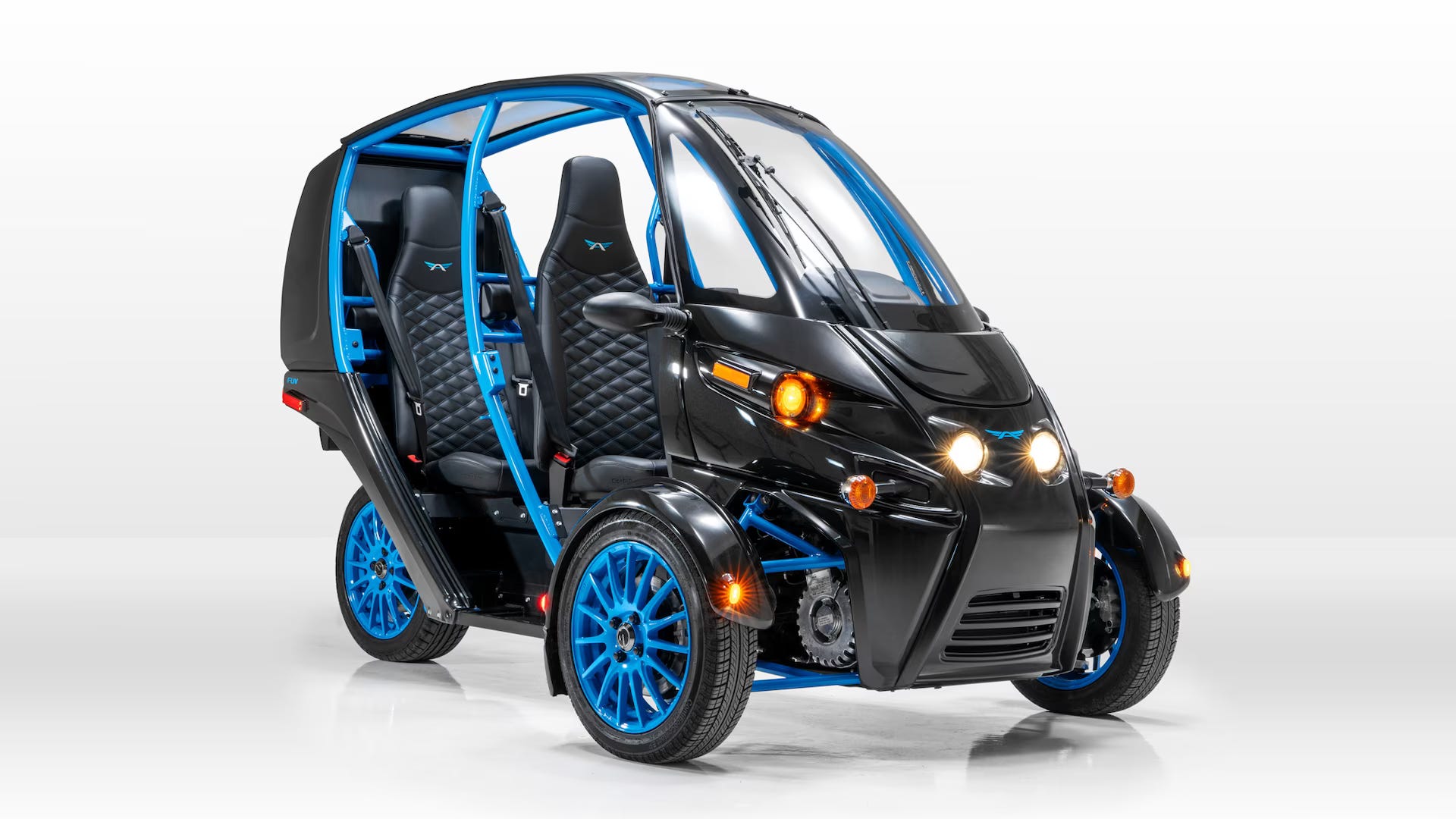
The company has been around since 2007. Based in Oregon, Arcimoto has created an innovative three-wheeler platform in the reverse-trike configuration.
The company took nearly ten years and eight iterations to perfect the FUV before starting production in 2017. However, sales could have been faster. At the end of 2022, the company stated that just more than 500 Arcimotos were on the road, 228 of which had been delivered in 2022.

The slow sales are partly due to the price—most variants cost more than USD20,000 on the road—and partly because the reverse trike serves a very niche case. Due to the slow sales, Arcimoto followed a dual model of selling and renting its three-wheelers.
The company is traded on the Nasdaq under the ticker FUV and went public in September 2021. To date, Arcimoto has raised USD 84.5 m in funding, of which USD 19.5 m was raised during the IPO. Significant investors included Keiretsu Capital, WR Hambrecht (exited), and Oregon-based accelerator Starve Ups.
When going public, the company had a USD 99.0m valuation at a share price of USD 6.0. However, its value has eroded massively since then, and currently, it trades at around USD 0.13.
Actually, it does not trade much – Nasdaq has delisted it and now trades in the Over-The-Counter (OTC) market.
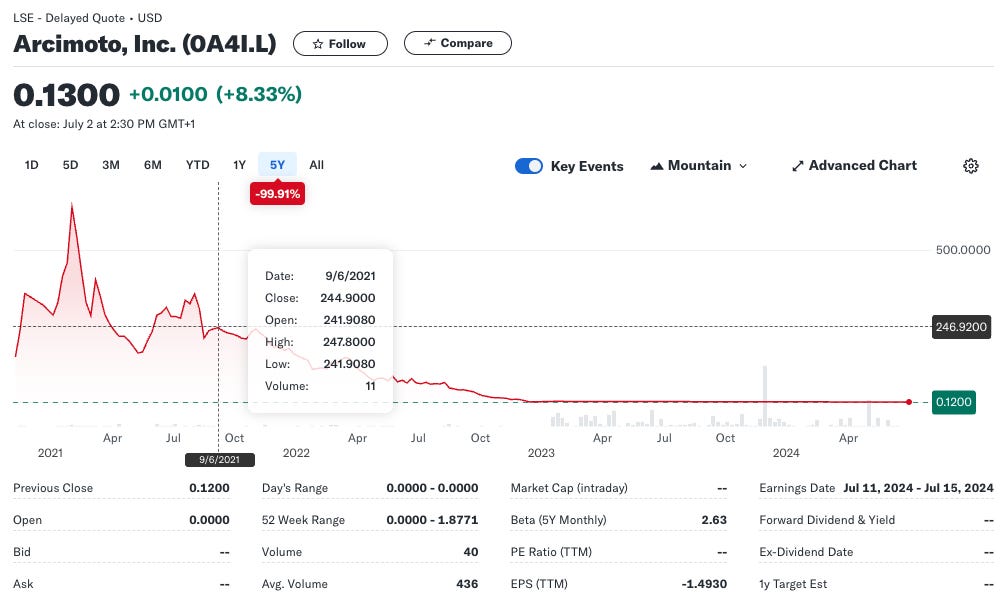
In the last few quarters, the company has been focused more on easing debt, having given up trying to improve FUV sales. It was warned of potential bankruptcy, has stopped its plant and put its assets on sale, has not paid suppliers, and has been fined.
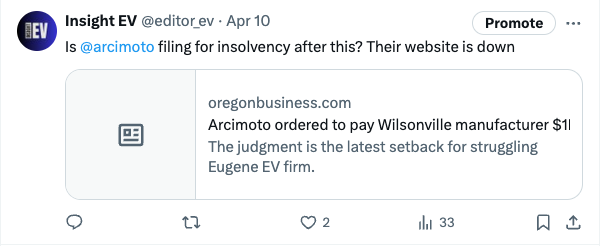
The website remains down even as more lawsuits pile up, including one from Sumitomo Mitsui, while the CEO remains defiant about continuing operations.
Arcimoto has not been making filings on time, and apart from not filing for insolvency till now, we see no signs of life.
Volcon (Nasdaq: VLCN)
“Not everything weird has to be electric and vice-versa,” we said aloud when we found Volcon for the first time. They had weird ideas for products, exploring micro-niches where we thought little business could be done. Then, they surprised us by listing on the Nasdaq.
Volcon is a US-based manufacturer of outdoor/power sports electric vehicles. The company produces electric motorcycles, ATVs, and pedelecs. They make some weird exciting vehicles, like the one below:
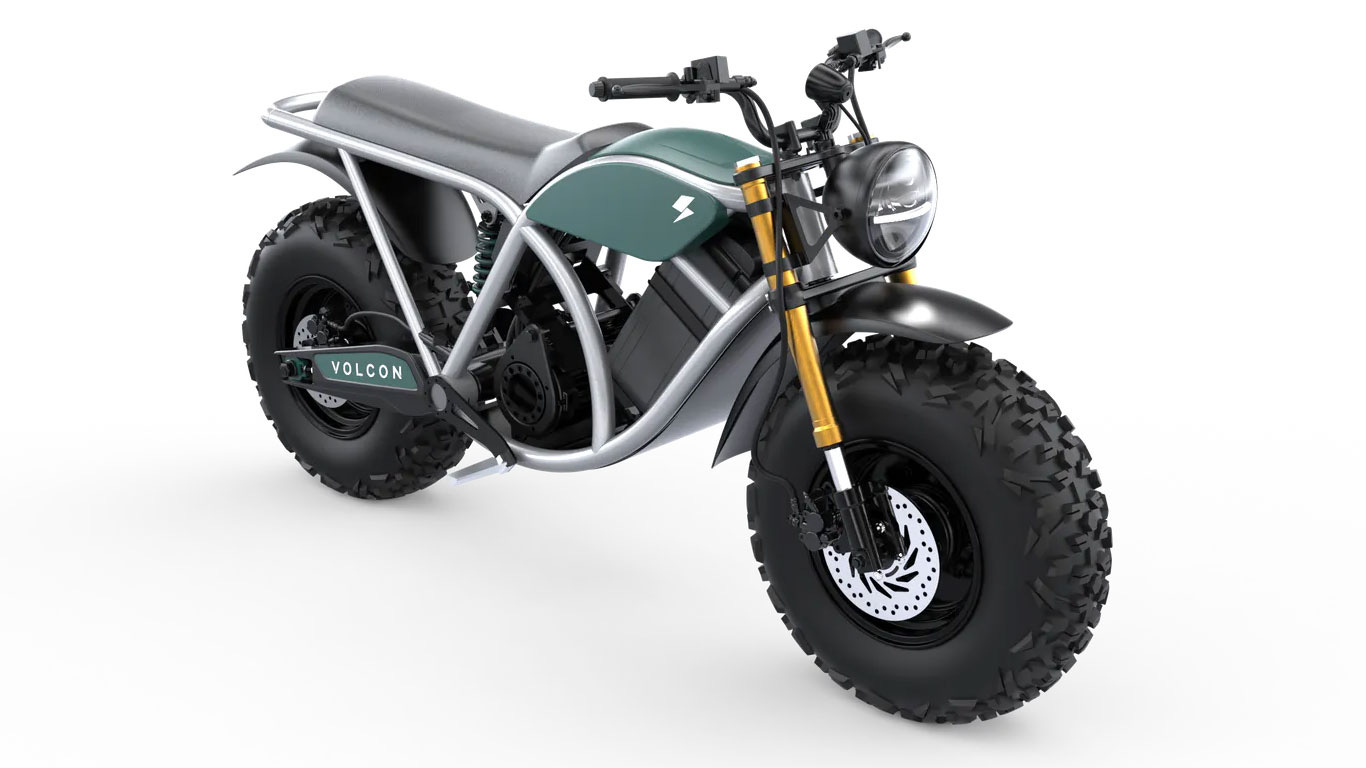
The company was founded in 2020 and began shipping the Grunt fat tyre motorcycle at the end of 2021. As much as we like the Grunt, there is no denying it would have a limited appeal. The company claims they have 1189 pre-orders yet managed to ship only 180 Grunts in 2023.
Time then to look at something with more widespread appeal?
Enter the Stag. In a market dominated by Polaris, BRP and a few more, Volcon thinks they can carve a niche. The Stag ATV was first unveiled in July 2022. The side-by-side ATV deliveries were expected to start at the end of 2023, but the first delivery was made only in February 2024 to the Army Engineers Corps. The first customer delivery only happened last month.
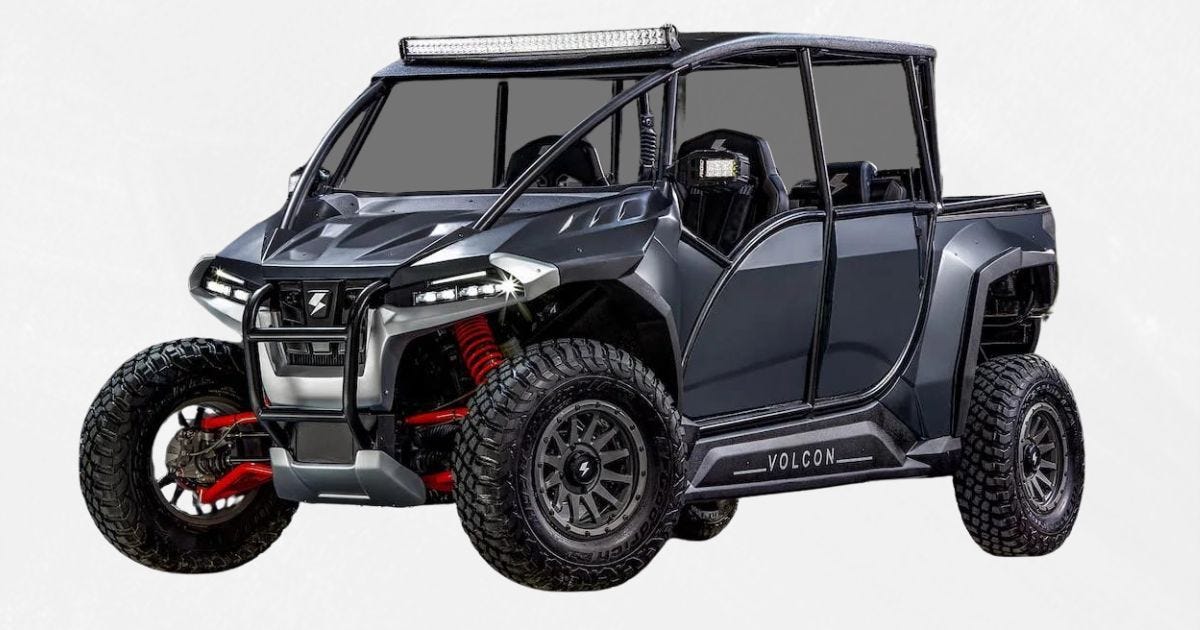
Besides the above, Volcon has also started selling eBikes/Pedelecs under the Brat brand name. There is also the Volcon Youth Line of dirt bikes for younger riders between 4 and 11, sourced from Torrot. This business is now closed.
Volcon has been publicly traded on the Nasdaq (Ticker: VLCN) since October 2021. During the IPO, Vulcan raised USD 16.6m, valued at USD 62.4m. Since then, there has been a massive erosion of value, and currently, the company’s market cap is less than USD 2.0m.
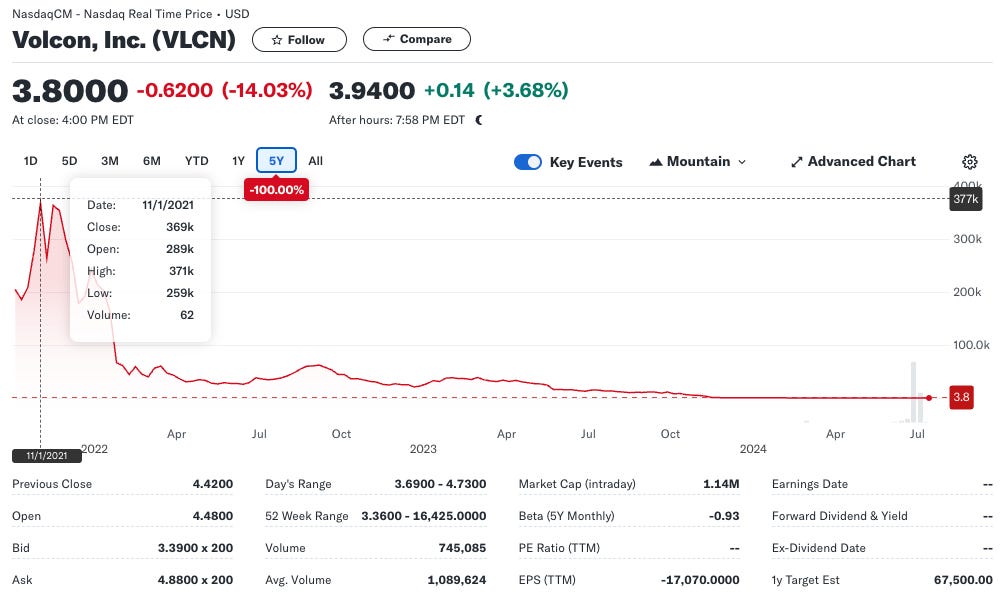
Since the IPO, Volcan has raised USD47.9m in fresh equity and debt. Each time, the fresh equity is raised at a significant discount on the IPO price.
For FY 2023, Volcon had revenues of USD 3.26m, against which the company made an operating loss of USD 29.79m and a net loss of USD 45.07m.
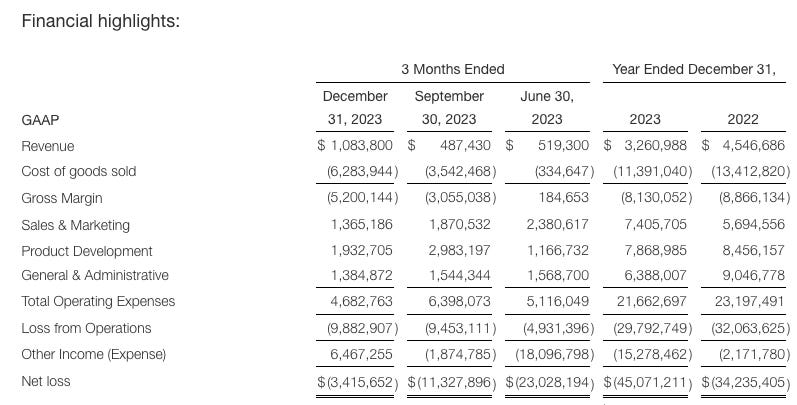
With such heavy losses, Volcon is likely facing a working capital crunch even as it has started the deliveries of the Stag side-by-side ATV.
In February 2024, Vulcan appointed John Kim as its new CEO. Kim has an entrepreneurial background and founded Super 73, the company he headed until 2019. Kim’s appointment should bring new energy to the beleaguered company.
The results for the first quarter indicate no improvement in revenues (USD 1.03m) even though operating losses have declined to USD 4.24m (USD 9.88m in Q1 2023).
Volcon also has its troubles with NASDAQ.

We will pause here and return next week to continue this discourse with Niu, VMoto, Zapp, and Yadea. Not all of them are bad!
We also look at Energica and Ideanomics.
We also examine Damon and its ongoing plans to go public through a SPAC.
Now, where have we heard that before?


